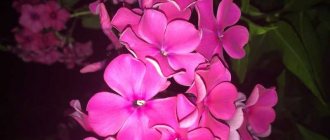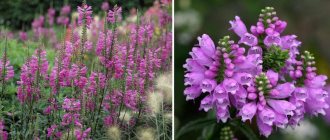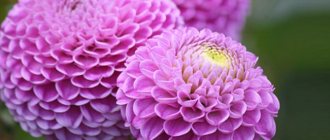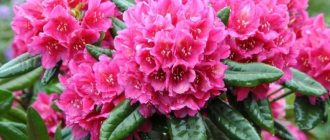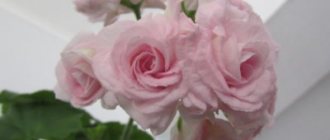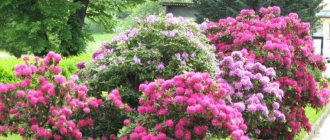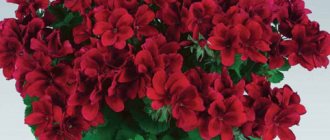The gardenia flower is a plant native to the tropics. Many gardeners agree that it is very capricious and requires careful care.
Considering that there are a sufficient number of varieties, the most optimal for home conditions is jasmine. If favorable conditions are created, this flower will delight you for a long time.
What is necessary?
Gardenia jasmine will fit well into any room with any interior. The apartment will be filled with comfort, and thanks to its unpretentiousness, it will fill the room with grace for a long time. Therefore, you need to take care of favorable conditions for the plant. Here are a few basic rules.
First of all, keep the soil moderately moist. Also, sudden changes in temperature are undesirable, and the most optimal is a twenty-degree temperature regime. The storage location should be filled with light, but direct sunlight falling on the plant is not suitable.
Flower growth is fastest in conditions with high humidity. And finally, try to use warm, purified, settled or rain water.
Some types of gardenia
According to various sources, the genus Gardenia contains from 60 to 250 species of often evergreen plants. Let's list just a few of them:
- Gardenia thunbergia
. A very tall, unpretentious and hardy plant with large snow-white flowers.
Gardenia Thunbergii is most suitable for garden summer maintenance
- Gardenia Taitensis
. The flower petals of this species resemble propeller blades.
Tahitian varieties of gardenia have quite large flowers (in the photo - next to the flower of the more common gardenia jasminoidea (jasminoid)
- Gardenia Tubifera
. Showy yellow flowers against light foliage.
Gardenia Tubifera has several varieties, but its flowers are always yellow, with dense petals in the shape of propeller blades
- Gardenia Kailarsenia
(Vietnamese). It is distinguished by large flowers with six petals.
Vietnamese gardenia flowers are very large in size. Like many other varieties of gardenia, during the fall period its petals curl slightly
- Gardenia Brighamii
(Hawaiian).
This species has almost disappeared in nature. Its white flowers consist of six petals and have a very strong aroma.
Hawaiian gardenia is known for its strong spicy, warm aroma
- Gardenia Radicans
. Representative of a dwarf species. Some varieties of this species have variegated leaves.
Small bushes of gardenia Radicans look very good in landscape compositions directly near the house, and in addition give a strong, pleasant aroma
- Gardenia Citriodora
. A rare variety with a delicate scent of flowers of five petals, similar to a lily.
The rare Gardenia Citriodora has pinkish petals.
- Gardenia Kula
. Because of its large yellow flowers, this species is sometimes called golden gardenia.
Gardenia Kula (golden gardenia) is one of the varieties of gardenia Tubifera
In indoor floriculture, the most popular species is gardenia jasmine , which has the second name “Cape Jasmine”. Many varieties of this species have been bred using the method of selection, which differ in size, shape, color of flowers and foliage, as well as flowering duration. Home Gardenia, as a rule, has a double texture of flowers. The bush itself can reach a height of 45-50 cm.
The homemade jasmine gardenia bush grows quite high, up to 45-50 cm
Light
As we have already mentioned, the lighting must be constant. The south side of the house is not suitable due to the presence of sunlight, so if possible, give the plant a western or eastern window.
In winter, try not to move or turn the flower, otherwise it may crumble and stop growing. Also, avoid drafts.
Temperature
In the warm season, gardenia at home requires approximately 22 degrees of heat. In winter, the flower will lay buds, and this requires a slightly lower temperature - from 16 degrees. However, do not exceed the specified limit for summer - the life process may slow down.
The air and soil must be at the same temperature - therefore strong changes are unacceptable. Two or three temperature jumps can completely ruin a flower.
Beneficial features
Photo of gardenia jasminoides
Used in folk medicine. The roots and leaves of the plant are used to prepare decoctions and infusions. The drugs are used to treat ulcers, hepatitis, mastitis, for diseases of the esophagus and to stop bleeding, and also as an antipyretic.
Gardenia in perfumery
Due to the delicate aroma of gardenia, its extract is very often used in modern perfumery. Naturally, we have now learned to make synthetic fragrances using several essential oils.
The scent of jasmine adds romance and gentle sensuality to the perfume. By using this scent, women are ready to open up to new relationships that bring passion and unsurpassed sensations. Natural gardenia extract was used by Coco Chanel to prepare her famous Chanel Gardenia perfume. Annick Goutal created her incredibly fragrant perfume called Gardenia Passion in memory of her trip to Japan.
Gardenia jasmine has become a symbol of spring, love and sensuality.
Medicinal properties
Cape jasmine is not only beautiful, but also very beneficial for health. You can prepare a decoction from the roots and fruits that will help heal tonsillitis, stomatitis, jaundice, and sore throat. You can apply the paste from the fresh plant to a wound or bruise.
You can use it externally, in the form of rinses or lotions, but under no circumstances swallow it, as there is a chance of poisoning.
When working with gardenia, be sure to wear gloves.
If you have free time for care, be sure to plant jasmine gardenias at home. Your home will be decorated with white flowers and will smell like French perfume.
How to water?
Home care requires strict adherence to water balance. It is noteworthy that depending on the season, the flower requires different amounts of moisture. For example, when it is actively growing and developing, abundant watering is necessary after the soil dries out.
During the demi-season period, the plant should be watered once every 3-4 days after the soil has dried. During the cold season, provide water supply at a minimum level.
Use slightly warm water - it should be settled, purified or rainwater. A small amount of lemon juice in the liquid will not be amiss.
When buds begin to appear, try to provide high humidity. It would not be superfluous to organize such conditions during the rest of the plant’s life.
After the flowers open, you should stop spraying the gardenia. First of all, because they are fragile and can change their color. A small container of water located near the pot will not be superfluous.
Varieties
- Beauty, or Beauty in Latin , is perhaps the most popular variety with double snow-white flowers. Blooms profusely from early June until autumn.
- Belmont, otherwise Belmont , is distinguished by densely double flowers and is the most fragrant. Has increased resistance to diseases.
- Amy or Aimee is a bush with large flowers of perfect double shape, reaching 12 cm in diameter. Capable of blooming twice a year.
- Mystery or in Latin Mystery is a strong and hardy variety with large leaves that grows strictly vertically. The flowers are quite large, flat, terry in shape.
- Variegata, otherwise Variegata, is a variegated compact form with charming small flowers. The foliage color changes from green to light cream. The bush grows slowly and is ideal for growing in a pot.
- Radicans or Radicans is a dwarf variety with small glossy leaves and small double flowers. This variety begins to bloom later than its relatives and is ideal for growing using the bonsai technique.
Trimmings and pests
If dried leaves appear, it is recommended to remove them immediately. The same goes for weak shoots and flowers. When the plant has grown sufficiently, it will not be a bad idea to thin out the leaves a little.
Basically, all gardenia problems, such as falling flowers, faded leaves, unopened buds, are associated with insufficient lighting or temperature conditions.
If yellow stains appear, we recommend slightly acidifying the soil with lemon juice, and if the plant develops too slowly, there are probably pests.
Thus, we have examined the main aspects related to home care for this flower. All you need is the right approach, following a few basic rules, and you won’t need photos of gardenia - the plant will delight you live, on your window.
Feeding rules
Enriching gardenia with nutrients is vital, otherwise it will not develop properly. Mineral complexes applied weekly and potassium-phosphorus fertilizers (used according to instructions) are used as fertilizing.
The use of long-acting complexes makes it easier for beginners. Nitrogen is added when the hydrangea fades, because its excess causes the growth of unwanted shoots.
To avoid causing unnecessary problems, it is better to use preparations marked “for flowering plants.”
